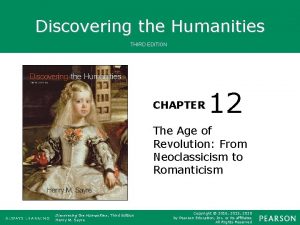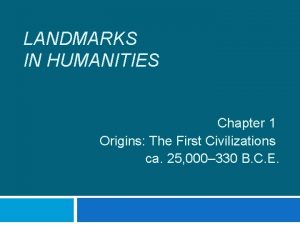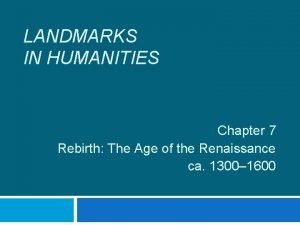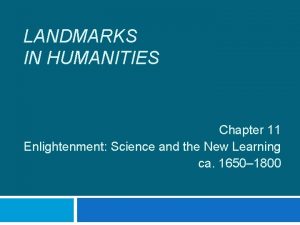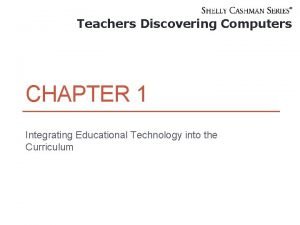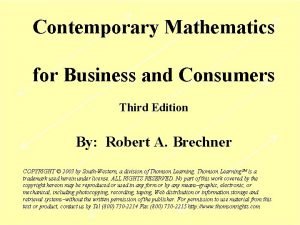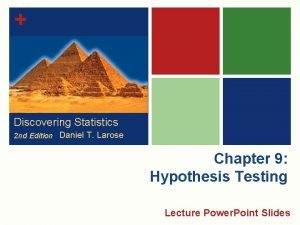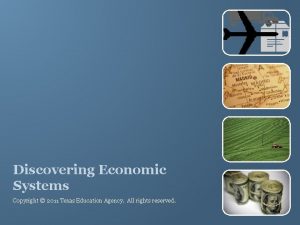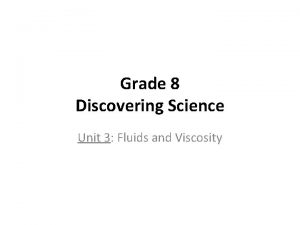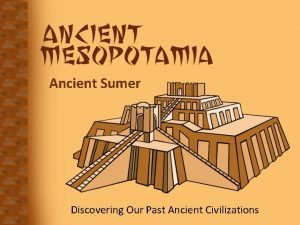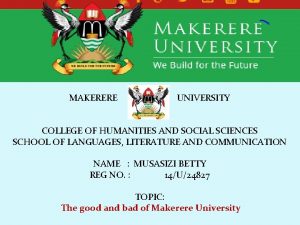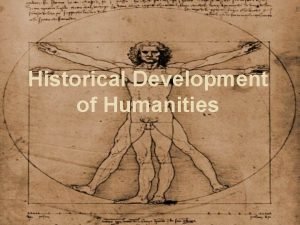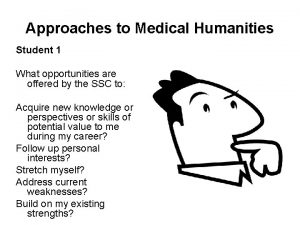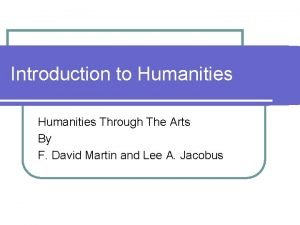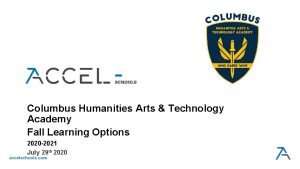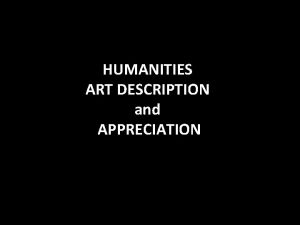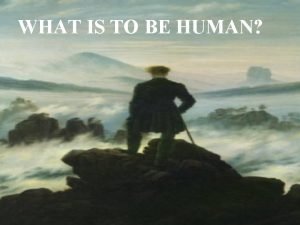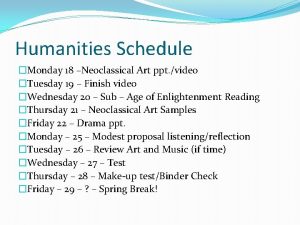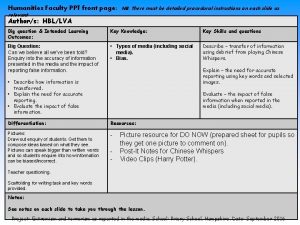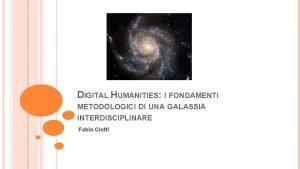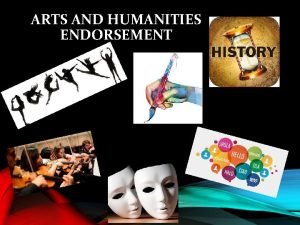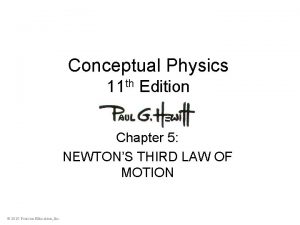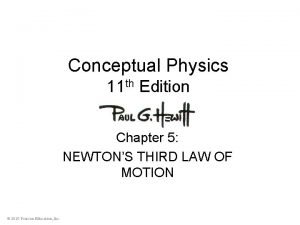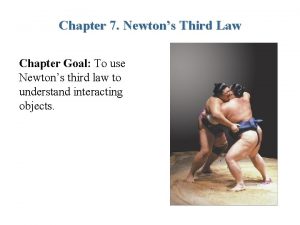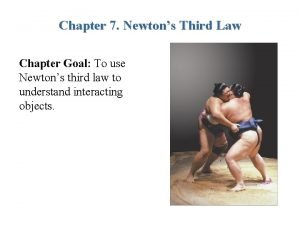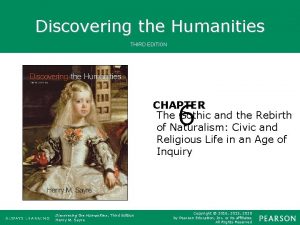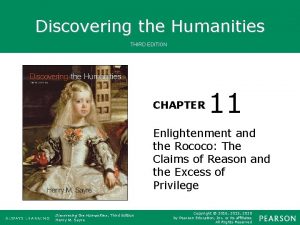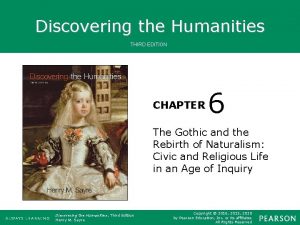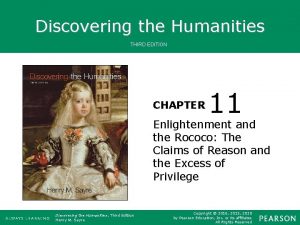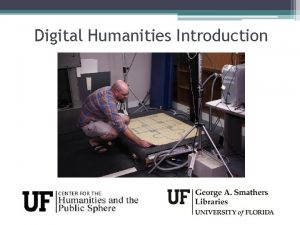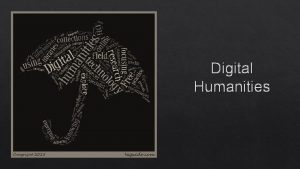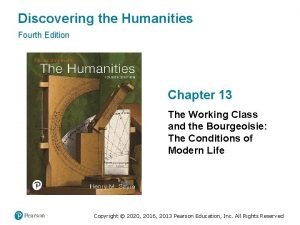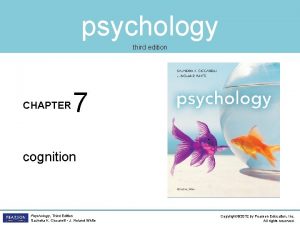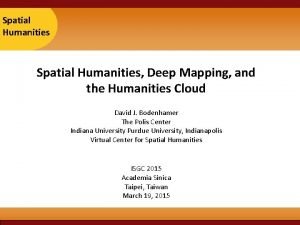Discovering the Humanities THIRD EDITION CHAPTER 6 The















![Architectural Simulation: Ribbed Vault Rib vaulting. [Fig. 6. 6] Architectural Simulation: Ribbed Vault Rib vaulting. [Fig. 6. 6]](https://slidetodoc.com/presentation_image_h2/425b08920e3b2a98e00ad06c77d8e4d2/image-16.jpg)

![Flying buttresses, Cathedral of Notre-Dame, Paris, France. 1211– 90. [Fig. 6. 8] Flying buttresses, Cathedral of Notre-Dame, Paris, France. 1211– 90. [Fig. 6. 8]](https://slidetodoc.com/presentation_image_h2/425b08920e3b2a98e00ad06c77d8e4d2/image-18.jpg)


![Jamb statues, west portal, Chartres Cathedral. 1145– 70. © Bednorz-images, Cologne. [Fig. 6. 10] Jamb statues, west portal, Chartres Cathedral. 1145– 70. © Bednorz-images, Cologne. [Fig. 6. 10]](https://slidetodoc.com/presentation_image_h2/425b08920e3b2a98e00ad06c77d8e4d2/image-21.jpg)




























































- Slides: 81

Discovering the Humanities THIRD EDITION CHAPTER 6 The Gothic and the Rebirth of Naturalism: Civic and Religious Life in an Age of Inquiry Discovering the Humanities, Third Edition Henry M. Sayre Copyright © 2016, 2013, 2010 by Pearson Education, Inc. or its affiliates All Rights Reserved

Learning Objectives 1. Outline the ideas, technological innovations, and stylistic developments that distinguish the Gothic style in France. 2. Explain why the University of Paris was preeminent among medieval institutions of higher learning. 3. Define the Radiant style.

Learning Objectives 4. Compare and contrast art and civic life in Siena and Florence. 5. Examine the spread of a vernacular literary style in European culture.

Architectural Panorama: Cathedral of Notre Dame, Paris The Cathedral of Notre-Dame, Chartres, France. ca. 1134– 1220. © Adam Woolfitt/Corbis. [Fig. 6. 1]

Moses window, Abbey Church of Saint-Denis, France. 1140– 44. © Bednorz-images, Cologne. [Fig. 6. 2]

Saint-Denis and the Gothic Cathedral • The architectural style that came to be known as Gothic originated at the Abbey of Saint-Denis, just north of Paris. • Saint-Denis was dedicated in 1144. • The building was the work of Abbot Suger of Saint-Denis.

Saint-Denis and the Gothic Cathedral • Abbot Suger wanted to bring prominence to the Île-de-France by creating an architecture that surpassed all others in beauty and grandeur. • He also added a new façade with twin towers and a triple portal. • Soon many other cathedral buildings in France followed suit.

Architectural Panorama: Chartres Cathedral West facade, Chartres Cathedral, France. ca. 1134– 1220; south spire ca. 1160; north spire, 1507– 13. © Bednorz-images, Cologne. [Fig. 6. 3]

Saint-Denis and the Gothic Cathedral • Abbot Suger was inspired by writings that interpreted light as the physical and material manifestation of the Divine Spirit. • The church's beauty was designed to elevate the soul to the realm of God.

Stained Glass • The purpose of the stained-glass programs in all Gothic cathedrals was to tell the stories of the Bible to an audience that was largely illiterate. • The stained-glass program at Chartres is immensely complex.

The Tree of Jesse window, Chartres Cathedral. ca. 1150– 70. © Dean Conger/Corbis. [Fig. 6. 4]

Stained Glass • Architectural innovations during the Gothic freed the walls to contain increasingly larger windows. • The rose window, or a round window with mullions and traceries extending outward from its center, in the north transept at Chartres symbolizes the Virgin Mary in her role as the Mystic Rose.

Gothic Architecture • A key innovation was the rib vaulting. • Rib vaulting made it possible to replace the massive Romanesque stonework with thinner columns and patterns of ribs and windows. • All architectural elements point upwards like a gravity-defying crescendo that carries the viewer's gaze toward the heavens.

Rose window and lancets, north transept, Chartres. ca. 1210– 30. Angelo Hornak, London. [Fig. 6. 5]

Gothic Architecture • The flying buttresses help spread the weight of the vaults over more supporting stone, allowing the walls to be thinner. • Crockets, or leaflike forms that curve outward, were added to the pinnacles, spires, and gables of the cathedrals. § These were topped by finials, knoblike architectural forms.
![Architectural Simulation Ribbed Vault Rib vaulting Fig 6 6 Architectural Simulation: Ribbed Vault Rib vaulting. [Fig. 6. 6]](https://slidetodoc.com/presentation_image_h2/425b08920e3b2a98e00ad06c77d8e4d2/image-16.jpg)
Architectural Simulation: Ribbed Vault Rib vaulting. [Fig. 6. 6]

Flying buttresses, Cathedral of Notre-Dame, Paris, France. 1211– 90. John Bryson/Photo Researchers, Inc. [Fig. 6. 7]
![Flying buttresses Cathedral of NotreDame Paris France 1211 90 Fig 6 8 Flying buttresses, Cathedral of Notre-Dame, Paris, France. 1211– 90. [Fig. 6. 8]](https://slidetodoc.com/presentation_image_h2/425b08920e3b2a98e00ad06c77d8e4d2/image-18.jpg)
Flying buttresses, Cathedral of Notre-Dame, Paris, France. 1211– 90. [Fig. 6. 8]

Architectural Panorama: Cathedral of Notre Dame, Amiens, France West facade, Amiens Cathedral, France. 1220– 36/40, and continued through the 15 th century. © Stuart Black/Robert Harding World Imagery/Corbis. [Fig. 6. 9]

Gothic Sculpture • Gothic sculptors began to reintroduce Classical principles of sculptural composition into Western art. • The traditional narratives of biblical tradition would no longer speak through abstracted and symbolic types, but instead required believable, individual bodies and animated facial expressions to tell their stories.
![Jamb statues west portal Chartres Cathedral 1145 70 Bednorzimages Cologne Fig 6 10 Jamb statues, west portal, Chartres Cathedral. 1145– 70. © Bednorz-images, Cologne. [Fig. 6. 10]](https://slidetodoc.com/presentation_image_h2/425b08920e3b2a98e00ad06c77d8e4d2/image-21.jpg)
Jamb statues, west portal, Chartres Cathedral. 1145– 70. © Bednorz-images, Cologne. [Fig. 6. 10]

Jamb statues, south transept portal, Chartres Cathedral. ca. 1215– 20. © Bednorz-images, Cologne. [Fig. 6. 11]

Architectural Panorama: Cathedral of Notre Dame, Reims, France Annunciation and Visitation, central portal, west facade, Reims Cathedral, Reims, France. Angel of the Annunciation, ca. 1245 – 55; Virgin of the Annunciation, 1245; Visitation group, ca. 1230– 33. © Photo Scala, Florence. [Fig. 6. 12]

Music in the Gothic Cathedral: Growing Complexity • With its vast spaces and stone walls, the Gothic cathedral could be as animated by its acoustics as by its light. • At the School of Notre-Dame in Paris, the first collection of music in two parts, the Magnus Liber Organi (The Great Book of Polyphony), was widely distributed by about 1160.

Music in the Gothic Cathedral: Growing Complexity • It was chiefly the work of the composers Léonin and Pérotin. § Among their most significant innovations is their emphasis on counterpoint and the complex musical form of the threeto four-voice motet.

Music in the Gothic Cathedral: Growing Complexity • The quadrivium was a branch of the regular liberal arts curriculum associated with music, arithmetic, geometry, and astronomy. • In contrast, the trivium was composed of the language arts including grammar, rhetoric, and dialectic.

The Rise of the University • The University of Bologna, founded in 1158, quickly established itself as a center for the study of law. • Proficiency in Latin was mandatory, and students studied Latin in all courses of their first four years of study. • The University of Paris was chartered in 1200, and soon after came Oxford University and Cambridge in England.

Heloise and Abelard • The quality of the teaching at the University of Paris distinguished it from other universities. • The school's most renowned lecturer was Peter Abelard, who taught by the dialectical method. • Probably the most important scholar at the University of Paris was Thomas Aquinas.

Jacobello and Pier Paolo dalle Masegne (fl. 1383– 1409). Law Students, relief decorating the tomb of a law professor at the University of Bologna. ca. 1200. Marble. Museo Civico, Bologna, Italy/Giraudon/Bridgeman Images. [Fig. 6. 13]

The Education of Women • Some exceptions to the rule of women not allowed to attend universities existed. § Novella d'Andrea lectured on philosophy and law in Bologna. § A major work attributed to Trotula of Salerno, Italy, is On the Diseases of Women.

Thomas Aquinas and Scholasticism • Thomas Aquinas adopted Abelard's dialectical method to his own Scholasticism. • The medieval summa was an authoritative summary of all that was known on a traditional subject, and it was the ultimate aim of every highly educated man to produce one.

Thomas Aquinas and Scholasticism • Aquinas built "articles of faith" to build upon his rational demonstrations in the Summa Theologica. • Christians never quite accepted Aquinas' writings, but his influence on theology was profound.

The Radiant Style and the Court of Louis IX • By the middle of the thirteenth century, the Gothic style in France had been elaborated into increasingly flamboyant patterns of repeated traceries and ornament, which is referred to as Rayonnant or Radiant style. • In France, this style was closely associated with the court of Louis IX (r. 1226– 1270).

Architectural Panorama: Sainte-Chapelle Closer Look: Sainte-Chapelle Interior, Upper Chapel, Sainte-Chapelle, Paris. 1243– 48. Sonia Halliday Photographs. [Fig. 6. 14]

The Radiant Style and the Court of Louis IX • One of his most important contributions to the Church, and to the history of Gothic architecture, is the royal chapel of Sainte-Chapelle on the Île de la Cité in Paris. • It is a palatine chapel, or palace chapel, on the model of Charlemagne, which connects Louis with his great predecessor.

The Gothic Style in the French Ducal Courts • Bruges's adaptation of the Gothic style for their civic government—a government at least theoretically independent of ducal authority— underscores not only its citizens' sense of self-worth, but also their growing independence from the very nobles they imitated.

The Miniature Tradition • A miniature is a very small painting associated with illumination, which is a painstakingly detailed painting that decorates manuscripts. • A Book of Hours typically begins with a calendar illustrated with images showing daily life or events associated with each month of the year.

Anonymous Flemish architects. Town Hall (center and right) and Greffe (left), Bruges, Belgium. Town Hall 1376– 1402; Greffe 1534– 37. © Bednorz-images, Cologne. [Fig. 6. 15]

Limbourg Brothers. January: The Feast of the Duke of Berry, from Les Très Riches Heures du Duc du Berry. ca. 1415. Illumination on parchment. 6 -3/4" × 4 -1/2". Musée Condé, Chantilly. © RMN-Grand Palais (domaine de Chantilly)/René-Gabriel Ojéda. [Fig. 6. 16]

Limbourg Brothers. February: Winter Scene, from Les Très Riches Heures du Duc du Berry. ca. 1415. Illumination on parchment. 6 -3/4" × 4 -1/2". Musée Condé, Chantilly. © RMN-Grand Palais (domaine de Chantilly)/René-Gabriel Ojéda. [Fig. 6. 17]

Civic and Religious Life in Siena and Florence • The governments of both cities were controlled by arti, or guilds, associations or groups of people with like-minded, often occupation-based interests. • By the end of the thirteenth century, the pope retaliated against Siena, making Florence the principal power in Tuscany.

Central Italy in about 1494, showing the Republics of Florence and Siena and the Papal States. [Fig. Map 6. 1]

Ambrogio Lorenzetti. Allegory of Good Government, Effects of Good Government in the City in the Sala della Pace, Palazzo Pubblico, Siena. 1338– 39. Fresco. © Studio Fotografico Quattrone, Florence. [Fig. 6. 18 a]

Closer Look: Ambrogio Lorenzetti, Effects of Good Government in the City and Country Document: Inscriptions on the Frescoes in the Palazzo Pubblico, Siena Ambrogio Lorenzetti. Allegory of Good Government, Effects of Good Government in the City in the Sala della Pace, Palazzo Pubblico, Siena. 1338– 39. Fresco. © Studio Fotografico Quattrone, Florence. [Fig. 6. 18 b]

Siena and Florence: Commune and Republic • Siena established itself in 1125 as a free commune (a collective of people gathered together for the common good). • This prospect of freedom attracted an increasing number of people to Siena, which brought prosperity to the town.

Siena and Florence: Commune and Republic • Like Siena, Florence was extremely wealthy, and its wealth was based on trade. • As in Siena, it was the city's bankers and moneylenders who made Florence a vital player in world trade.

Siena and Florence: Commune and Republic • Florentine bankers invented checks, credit, even life insurance. • In 1252, they introduced Europe's first single currency, the gold florin.

Painting: A Growing Naturalism • Both Siena and Florence put themselves under the protection of Virgin Mary. • It did not take long before they were competing to prove who could paint her the most magnificently.

Painting: A Growing Naturalism • In the process, they began to represent her less in the stiff, abstracted manner of the Byzantine icon and more as a real person of flesh and blood.

Duccio and Simone Martini • One of the first artists to break from the Byzantine tradition was the Sienese native Duccio di Buonsegna (active 1278– 1318). • Duccio's Maestà begins to abandon the conventions of the Byzantine icon and to incorporate the Gothic tendency to naturalism.

Closer Look: Duccio di Buoninsegna, Maestà Duccio di Buoninsegna. Maestà, main panel of Maestà Altarpiece, from Siena Cathedral. 1308– 11. Tempera and gold on wood. 7' × 13'6 -1/4". Museo dell'Opera del Duomo, Siena. © Studio Fotografico Quattrone, Florence. [Fig. 6. 19]

Simone Martini. Maestà, Council Chamber, Palazzo Pubblico, Siena. ca. 1311– 17, repaired 1321. Fresco. 25' × 31' 9". © Photo Scala, Florence. [Fig. 6. 20]

Duccio and Simone Martini • Simone Martini had worked as Duccio's apprentice on the Maestà, and probably modeled his own version on it. • Martini's Maestà is even more naturalistic, showing the Virgin sitting in the deep space of the canopy.

Cimabue and Giotto • Cimabue's Madonna Enthroned with Angels and Prophets solidified his position as the leading painter in Florence. • Most remarkable are Cimabue's concern for spatial volume and his treatment of human figures with naturalistic expressions.

Cimabue. Madonna Enthroned with Angels and Prophets, from high altar of Santa Trinità, Florence. ca. 1285. Tempera and gold on wood. 11' 7 -1/2" × 7' 4". Galleria degli Uffizi, Florence. © Studio Fotografico Quattrone, Florence. [Fig. 6. 21]

Cimabue and Giotto • The four prophets at the base of the throne are surprisingly individualized, suggesting the increasing prominence of the individual personality in the era. • The most remarkable shift toward naturalism can be seen in the work of Cimabue's apprentice, Giotto di Bondone.

Cimabue and Giotto • Giotto apparently learned to draw accurately from life, and his figures show his skill. • Giotto also was capable of revealing a wide range of emotion and character in the human face. • Both artists were becoming more skillful in painting with tempera, which allowed them to increase details.

Giotto di Bondone. Madonna Enthroned with Angels and Saints, from Church of the Ognissanti, Florence. ca. 1310. Tempera and gold on wood. 10' 8" × 6' 8 -1/4". Galleria degli Uffizi, Florence. © Studio Fotografico Quattrone, Florence. [Fig. 6. 22]

Closer Look • Buon fresco is the technique of painting on wet plaster. • When the undercoat is dry, a full-size drawing of the work, or cartoon, to the wall. • Sinopia refers to a filled-out charcoal drawing on the wall.

Closer Look • Since the paint had to be applied on a wet wall, small sections, or giornata (literally "day's work") were made with seams at the contours of major figures and objects.

Video: Students on Site: Exterior of the Arena Chapel Closer Look: The Scrovegni Chapel Giotto. The Life of Christ and the Virgin frescoes. 1305– 06. Scrovegni Chapel, Padua. © Studio Fotografico Quattrone, Florence. [Fig. 6 -CL. 1]

Giotto di Bondone. The Lamentation, Scrovegni Chapel, Padua. 1305– 6. Fresco. 78 -1/2" × 73". © Studio Fotografico Quattrone, Florence. [Fig. 6 -CL. 2]

Video: Studio Technique: Egg Tempera Closer Look: Technique: Fresco Giotto. The Adoration of the Magi, Scrovegni Chapel, Padua. 1305– 06. Fresco. 78 -1/2" × 73". Scrovegni Chapel, Padua. ©Studio Fotografico Quattrone, Florence. [Fig. 6 -CL. 3]

The Spread of Vernacular Literature in Europe • In the early twelfth century, authors across Europe began to write in the vernacular, the language spoken in the streets. • One of the greatest medieval Italian vernacular poets was Dante Alighieri (1265– 1321).

Dante's Divine Comedy • One of the greatest medieval Italian vernacular poets was Dante Alighieri (1265– 1321). • Dante's Divine Comedy records the travels of the Christian soul from Hell to Purgatory and finally to Salvation in three books—the Inferno, Purgatorio, and Paradiso.

Dante's Divine Comedy • The rhyme scheme of the Divine Comedy is terza rima—an interlocking three-line pattern invented by Dante that goes a/b/a, b/c/b, c/d/c, and so on. • The three-line stanza is part of a numerological pattern in the poem.

The Black Death and Its Aftermath • In December 1347, the bubonic plague arrived in Sicily. • Within months, the disease spread northward throughout Europe. • In Tuscany, the death rate in the cities ran about 60 percent.

Literature after the Black Death: Boccaccio's Decameron • The frank treatment of reality found in the visual arts carried over into literature. • The direct language of the vernacular proved an especially appropriate vehicle for rendering truth.

Document: "The Tale of the Three Rings" from The Decameron by Giovanni Boccacci Jean Le Noir. Pages with The Three Living (left) and The Three Dead (right) from the Psalter and Book of Hours of Bonne of Luxembourg. Before 1349. Grisaille, color, gilt, and brown ink on vellum. 5" × 3 -1/2". The Metropolitan Museum of Art, New York. The Cloisters Collection, 1969 (69. 86). Image copyright © The Museum/Art Resource/Photo Scala, Florence. [Fig. 6. 23]

Literature after the Black Death: Boccaccio's Decameron • One of the most remarkable accounts of the plague can be found in the Decameron ("Work of Ten Days") by Giovanni Boccaccio (1313– 1375), who had survived the Black Death. • The Florentine writer presents 100 stories as told by young noblemen and women who escaped plague-ridden Florence for the countryside.

Literature after the Black Death: Boccaccio's Decameron • Boccaccio introduces into Western literature a kind of social realism previously unexplored. • Perhaps reflecting the reality of death that surrounds them, the stories depict daily life as it is truly lived.

Document: Letters to Cicero (14 th c. ) by Petrarch Andrea Del Castagno. Francesco Petrarca. 1450. Fresco transferred to wood. 97 -1/4" × 60 -1/4". Galleria degli Uffizi, Florence. Erich Lessing/akg-images. [Fig. 6. 24]

Petrarch's Sonnets • One of Boccaccio's best friends was the itinerant scholar and poet Francesco Petrarca (1304– 1374), known as Petrarch. • Petrarch's sonnets, composed in memory of the poet's beloved Laura, inaugurate one of the most important poetic forms in Western literature.

Petrarch's Sonnets • These sonnets are mostly Italian sonnets, also known as Petrarchan sonnets due to the perfection of Petrarch's form.

Chaucer's Canterbury Tales • The first Englishman to translate Petrarch was the middle-class civil servant and diplomat Geoffrey Chaucer (ca. 1342– 1400). • Chaucer's Canterbury Tales are modeled on Boccaccio's Decameron.

Wife of Bath, from Geoffrey Chaucer's Canterbury Tales ("The Ellesmere Chaucer"). ca. 1400– 05. Illumination on vellum. Victoria and Albert Museum, London. The Art Archive/Victoria and Albert Museum London/Eileen Tweedy. [Fig. 6. 25]

Chaucer's Canterbury Tales • The Canterbury Tales is a framed collection of stories told by a group of pilgrims traveling from London to the shrine of Saint Thomas à Becket, Archbishop of Canterbury. • Though it is based on the Decameron, it is written in verse, not prose, and composed in heroic couplets.

Christine de Pizan: An Early Feminist • When her father and husband died, Christine needed to support three children, a niece, and her mother, so she became the first female professional writer in Europe.

Anonymous, La Cité des Dames de Christine de Pizan. ca. 1410. Illumination on parchment, page size 4 -3/4" × 7". Bibliothèque nationale de France. [Fig. 6. 26]

Continuity & Change • Humanism can be defined as the recovery, study, and spread of the art and literature of Greece and Rome, and the application of their principles to education, politics, social life, and the arts in general. § This concept would come to define the Renaissance in the two centuries following Petrarch.

Dance of Death. ca. 1490. Woodcut. Courtesy of the Library of Congress, Washington, D. C. Lessing J. Rosenwald Collection. [Fig. 6. 27]
 Discovering the humanities 3rd edition
Discovering the humanities 3rd edition Landmark in humanities 5th edition
Landmark in humanities 5th edition Landmarks in humanities 5th edition
Landmarks in humanities 5th edition Landmarks in humanities
Landmarks in humanities Discovering computers 2018 ppt
Discovering computers 2018 ppt Discovering computers 2018 chapter 1
Discovering computers 2018 chapter 1 Discovering self motivation
Discovering self motivation Discovering computer
Discovering computer Chapter 7 lesson 1 discovering parts of an atom answer key
Chapter 7 lesson 1 discovering parts of an atom answer key Mount hume classification
Mount hume classification Senile caries
Senile caries Principle of economics third edition
Principle of economics third edition Organic chemistry third edition david klein
Organic chemistry third edition david klein Organic chemistry third edition david klein
Organic chemistry third edition david klein Business mathematics third edition
Business mathematics third edition Modern operating systems tanenbaum
Modern operating systems tanenbaum Fundamentals of corporate finance canadian edition
Fundamentals of corporate finance canadian edition Fundamentals of corporate finance, third canadian edition
Fundamentals of corporate finance, third canadian edition Lifespan development third edition
Lifespan development third edition Lifespan development third edition
Lifespan development third edition Cell biology third edition
Cell biology third edition Joey's first 14 quiz grades in a marking period were
Joey's first 14 quiz grades in a marking period were Mis chapter 6
Mis chapter 6 Using mis (10th edition) 10th edition
Using mis (10th edition) 10th edition Participant diary/log
Participant diary/log Discovering computers 2016
Discovering computers 2016 What is self motivation?
What is self motivation? Discovering science 7
Discovering science 7 P test in statistics
P test in statistics Discovering economic systems guided practice
Discovering economic systems guided practice Discovering computers 2011
Discovering computers 2011 Discovering science 7
Discovering science 7 Muhammed computer technology
Muhammed computer technology Discovering engineering
Discovering engineering Defining and debating america's founding ideals
Defining and debating america's founding ideals Teachers discovering computers
Teachers discovering computers Pioneer species
Pioneer species Example of fluid
Example of fluid Amenhotop
Amenhotop Discovering personal genius
Discovering personal genius Tactile output device
Tactile output device The system generates regular electronic pulses
The system generates regular electronic pulses Ethics discovering right and wrong
Ethics discovering right and wrong Discovering the internet
Discovering the internet Discovering cells
Discovering cells Discovering our past ancient civilizations
Discovering our past ancient civilizations College of humanities and social sciences
College of humanities and social sciences Describe the historical background of humanities
Describe the historical background of humanities What is medical humanities
What is medical humanities Humanities through the arts
Humanities through the arts Brancusi
Brancusi Charles university faculty of humanities
Charles university faculty of humanities Columbus humanities arts and technology academy
Columbus humanities arts and technology academy Arts and humanities endorsement
Arts and humanities endorsement Humanities art appreciation
Humanities art appreciation B'faculty of humanities agh', b'poland'
B'faculty of humanities agh', b'poland' What is humanities
What is humanities What is humanities
What is humanities Humanities essay
Humanities essay Ca humanities
Ca humanities Ihsst
Ihsst Humanities art appreciation ppt
Humanities art appreciation ppt Introduction to humanities ppt
Introduction to humanities ppt Functions of art meaning
Functions of art meaning Digital humanities
Digital humanities Arts and humanities endorsement
Arts and humanities endorsement Chapter 7 newton's third law
Chapter 7 newton's third law Slightly tilted wings of airplanes deflect
Slightly tilted wings of airplanes deflect Conceptual physics chapter 5 newton's third law of motion
Conceptual physics chapter 5 newton's third law of motion Lesson 4 newton's third law answer key
Lesson 4 newton's third law answer key Chapter 12 section 3 newton's third law answer key
Chapter 12 section 3 newton's third law answer key Slightly tilted wings of airplanes deflect
Slightly tilted wings of airplanes deflect Chapter 7 newton's third law
Chapter 7 newton's third law Nellie hangs motionless by one hand from a clothesline
Nellie hangs motionless by one hand from a clothesline Chapter 7 newton's third law
Chapter 7 newton's third law Hát kết hợp bộ gõ cơ thể
Hát kết hợp bộ gõ cơ thể Ng-html
Ng-html Bổ thể
Bổ thể Tỉ lệ cơ thể trẻ em
Tỉ lệ cơ thể trẻ em Gấu đi như thế nào
Gấu đi như thế nào Glasgow thang điểm
Glasgow thang điểm Chúa yêu trần thế alleluia
Chúa yêu trần thế alleluia
